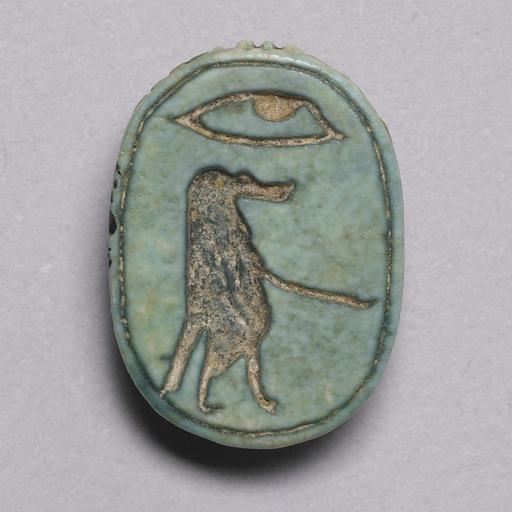MAKE A MEME
View Large Image

| View Original: | Egyptian - Scarab Amulet - Walters 4258 - Bottom.jpg (1800x1800) | |||
| Download: | Original | Medium | Small | Thumb |
| Courtesy of: | commons.wikimedia.org | More Like This | ||
| Keywords: Egyptian - Scarab Amulet - Walters 4258 - Bottom.jpg The ancient Egyptians believed that the dung beetle the Scarabaeus sacer was one of the manifestations of the sun god Representations of these beetles were used as amulets and for ritual or administrative purposes This scarab displays on the bottom side the figure of the goddess Taweret Her appearance combines a hippopotamus body lion paws crocodile head and tail and human arms and hands The goddess is standing on her hindlegs and her left arm is out stretched in front of her Above the goddess is a human eye It is possible to interpret both icons as hieroglyphs and translate Taweret is watchful The bottom design is linearly incised and hollowed out in sunk relief the depicted eye is done with very fine lines and dominant to the figure of the goddess by its size and placement; the figure of Taweret is for a hippopotamus unusually slender and elongated; the left outstretched arm with the open human hand is very slim and long and fills the empty space in front of the goddess; it is disproportional to her right arm which is placed beside her body; the whole layout is well organized but there is more space between the eye and the upper part of the frame than between Taweret and the lower part The highest point of the back is the partition between pronotum dorsal plate of the prothorax and elytron wing cases Pronotum and elytron have incised borderlines separation lines and V-shaped marks for humeral callosities shoulder thickenings The long-oval head is flanked by quarter-spherical eyes; the irregularly trapezoidal side plates show outside-depressions and the clypeus front plate four serrations The raise extremities have natural form and vertical hatch lines for the tibial teeth and pilosity hair The base is symmetrically oval The bottom design is linearly incised and hollowed out in sunk relief the depicted eye is done with very fine lines and dominant to the figure of the goddess by its size and placement; the figure of Taweret is for a hippopotamus unusually slender and elongated; the left outstretched arm with the open human hand is very slim and long and fills the empty space in front of the goddess; it is disproportional to her right arm which is placed beside her body; the whole layout is well organized but there is more space between the eye and the upper part of the frame than between Taweret and the lower part The scarab is longitudinally pierced was originally mounted or threaded and functioned as an amulet It should secure the protection of the goddess and refer to her watchfulness It might have been created to protect pregnant women or newborn children The figure of Taweret is an unusual variant with a crocodile instead of a hippopotamus head It is also unusual that the goddess has no nb-basket or other element below her feet to function as a baseline between 1070 736 BC Third Intermediate light beige steatite with blue-green glaze cm 1 5 1 1 0 7 accession number 42 58 17657 Henry Walters Baltimore 1929 mode of acquisition unknown Walters Art Museum Henry Walters Acquired by Henry Walters 1929 Translation Taweret is watchful place of origin Egypt <gallery> File Egyptian - Scarab Amulet - Walters 4258 - Impression jpg </gallery> Walters Art Museum license Ancient Egyptian scarabs in the Walters Art Museum Scarab amulet Taweret amulets | ||||